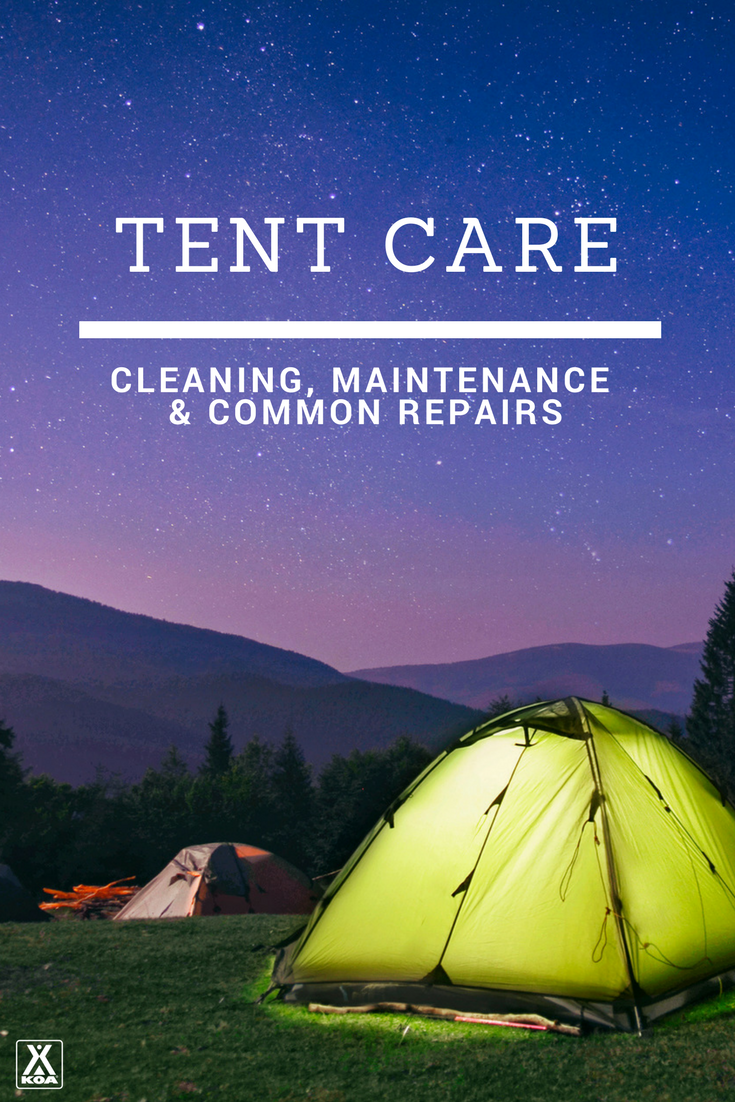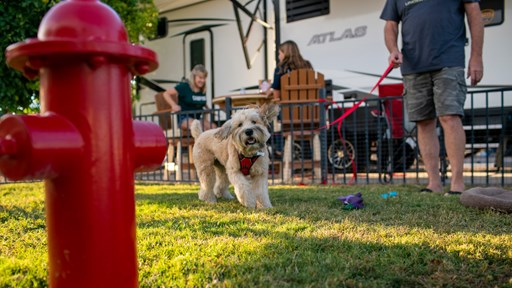If you’re not able to get out camping yet, now might be the perfect time to start planning ahead and cleaning your camping gear. You’ll not only be ready for the season when the time for your first trip comes around, you’ll aslso be able to start daydreaming about where you’ll go first. Read on and learn how you can get your tent ready for future camping trips.
Tent camping is a classic activity. There is something incredibly satisfying about carrying your shelter to your campsite, pitching it in the perfect spot and falling asleep to the gentle soundtrack of nature. A tent keeps you dry through rainstorms and sheltered from the wind, and that feeling of unzipping the front flap and taking in the morning air after a good night’s sleep is an unparalleled pleasure.
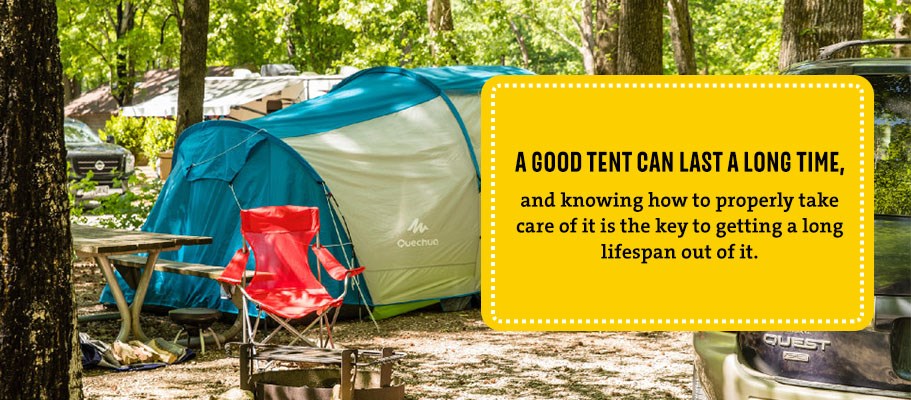
Tents are also becoming more advanced as new technologies and materials are developed, and each year sees more durable, lightweight and comfortable designs coming to market. A good tent can last a long time, and knowing how to properly take care of it is the key to getting a long lifespan out of it. This article will provide tips on repairing and maintaining your tent to ensure it’s around for many camping trips to come.
Tent Care, Maintenance and Repair
A tent is made of synthetic fabrics, metal, plastics and waterproof coatings that require care to perform properly. There’s a common misconception that, since these materials are strong and made to resist moisture, they can survive rough conditions — even the ones we occasionally impose upon them. While tents are made to protect against the elements outdoors, their durability is contingent upon proper care and treatment.
As with many manmade items, moisture presents the primary challenge in keeping tents fully operational. Removing moisture before storing the tent keeps the materials strong and waterproof. The same goes for cleaning your tent — dirt and grime also weaken the materials.
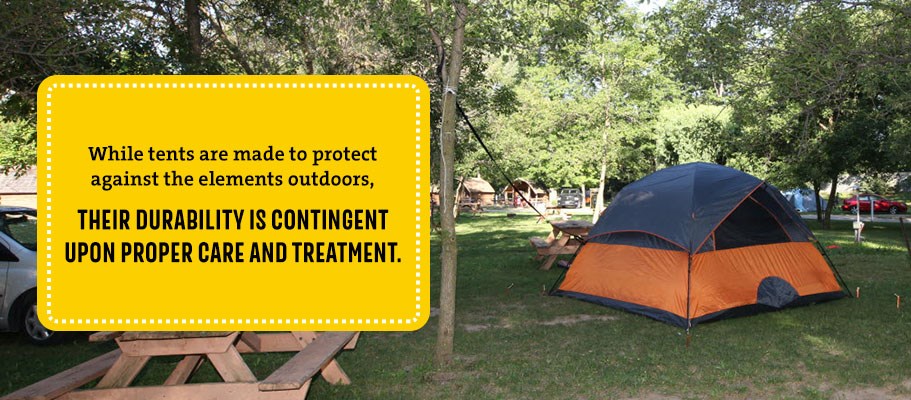
There are plenty of things you can do to protect your tent. Properly caring for your tent breaks down into three categories.
1. During Setup at the Campsite
Preparing your campsite is the first step. Choose a flat, level spot and remove twigs and stones that could puncture your tent’s floor. Then, lay out a footprint to protect your tent from the ground’s moisture — this can be a synthetic ground cover or even a folded piece of construction house-wrap.
If you will be keeping your tent in the same space for several days, it helps to be in the shade. Tent fabric does not take well to ultraviolet rays, and using the protection of trees is a great way to keep it from breaking down. Note that the rain fly is likely the most solar-resistant part of the tent, so it’s a good idea to keep it on during the day. Polyester rain flys handle sunlight better than nylon ones.
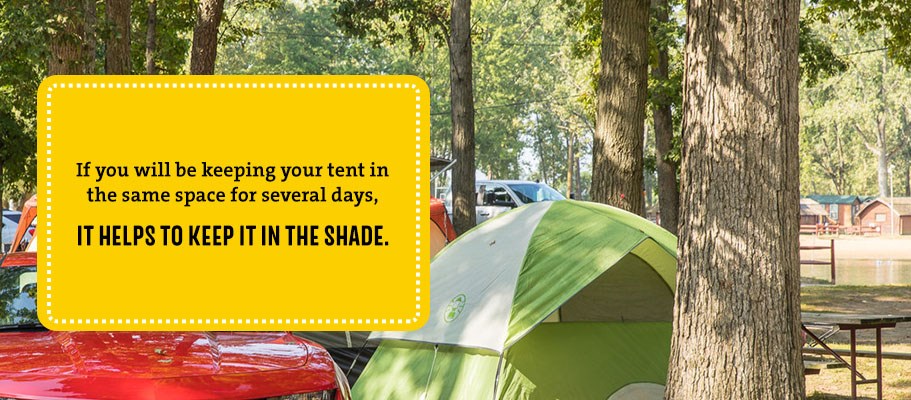
Finally, avoid whipping the tent poles around to lock them in place with their elastic cords. Doing so can break or put stresses on the metal, making it more likely to snap in the future. Take your time putting these together piece by piece.
2. During the Course of Your Camping Trip
As you are using your tent, one of the parts that receives the most mileage is the zipper. It can be frustrating when zippers don’t glide smoothly when you pull them with one hand. However, trying to force them can weaken and tear the fabric, so use your other hand to stabilize the zipper track while you pull away from it.
If the zipper track splits, you can usually fix it by running the zipper back over it until it latches back together. Otherwise, you may need to use pliers.
Keep all your boots, shoes and other dirty gear outside the tent. Tracking dirt inside the tent corrodes the material and can lead to holes in the floor. Additionally, store your food outside the tent — keeping it inside can attract rodents, who will gladly chew through the tent to get to it.
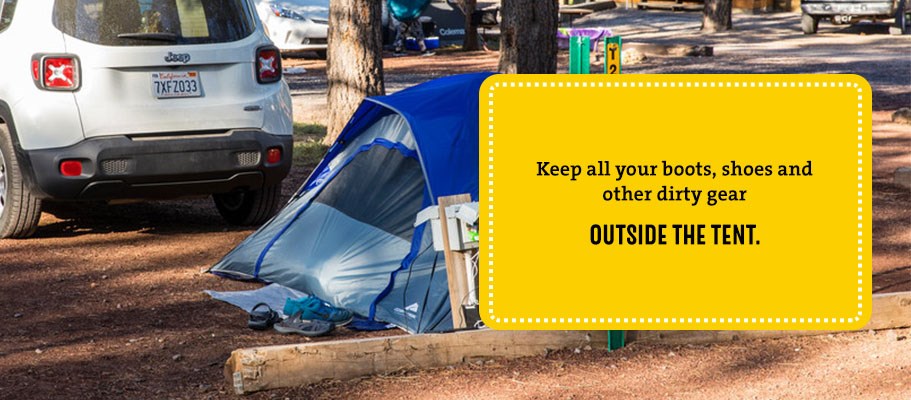
One final note: Dogs can make great sleeping buddies inside a tent, but their nails and teeth don’t mix well with the tent’s walls and floor. Therefore, it is not a good idea to leave your dog inside a tent as a means of containing it. Additionally, tents can grow quite hot in sunlight, making it hazardous for your dog to be inside.
3. Storing Your Tent After Camping
The first thing to do upon taking down your tent is to shake everything out, including the footprint and the tent itself. If you can pick your tent up with the poles still in place, it will be much easier to shake the dirt out of it.
Some tent poles pass through sheaths on the tent’s exterior for easy removal. When removing these, push them through instead of pulling. Pulling causes the poles segments to separate and get hung up on the fabric — which then puts strain on the shockcord. When you have pushed the poles free, break them down starting in the middle, then keep dividing the segments into halves.
Dry your tent thoroughly before putting it in a stuff sack or carrying case. There is little chance moisture hasn’t accumulated somewhere on the tent, and putting it in the sack is an invitation for mildew to grow. Also, when putting it in the sack, roll it up instead of stuffing it inside.
Once you get home, dry it out again — remember, a tent can never be too dry. The best way to store a tent long-term is in a looser sack like a pillowcase, as keeping it in the compact stuff sack can stress the materials.
Tent Maintenance
The preventive care before, during and after use described in the previous section will go a long way toward preserving your tent. Knowing how to properly maintain it will get you the rest of the way. Here are some tips for proper tent maintenance:
1. How to Clean a Tent
If you go on a long tent camping trip of several days or more, you should clean your tent upon returning home. Otherwise, if you just use it for occasional short camping trips, you should clean it every few months.
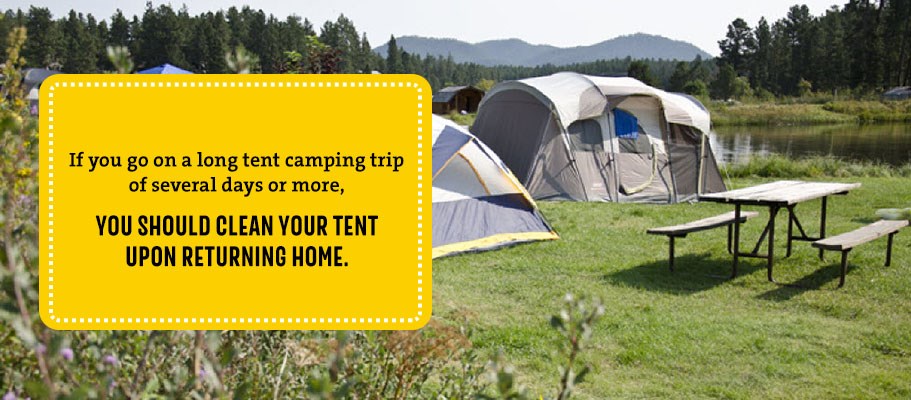
Can you wash a tent? Well, the first and most important rule is to never put your tent inside a washing machine or dryer. Even on their gentlest cycles, these devices can stretch, overheat and damage tents. All washing should be done by hand.
Start by filling a large bucket or sink with warm water and soap that is not detergent. Also avoid soaps that have fragrances, as these will attract insects, and make sure the soap you choose will not break down the waterproof coating. Use a non-abrasive sponge or cloth to scrub the tent gently, focusing on soiled areas but taking care not to overwork waterproof areas like the tent’s floor and seams.
When you have cleaned the problem areas, take the entire tent and immerse it in the bath of soapy, warm water. Wash and rinse it, then hang it up to dry thoroughly.
2. How to Avoid Getting Mold on Your Tent
Tents are series of fabrics strung up to provide a barrier between human beings and the world outside — it is natural that they accumulate moisture. When you sleep in a tent, your body produces heat, and your breath produces moisture. This warm, moist air floats upward, where it collides with the sides of the tent. Because this fabric is often cooler from the air outside, the moisture condenses on it. The same thing happens under the rain fly and on the bottom of the tent.
Mold forms when this moisture gets trapped in the tent. The most frequent cause of this is packing the tent up without properly drying it. To avoid getting mold on your tent, be extra-meticulous about drying your tent before storing it.
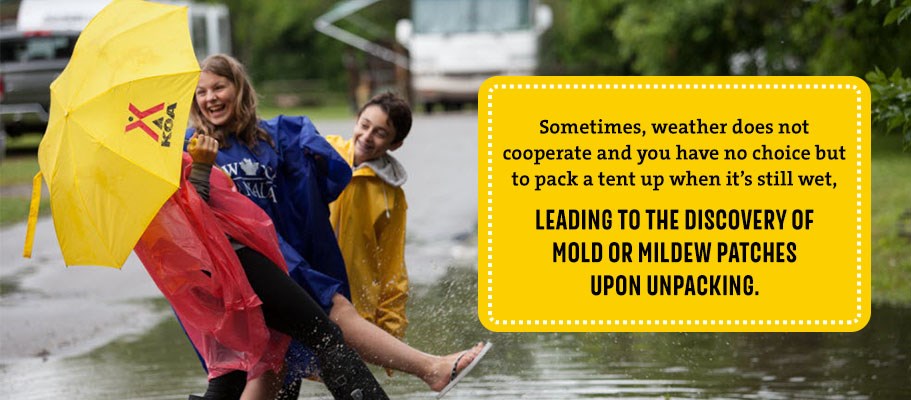
Bring the tent indoors and let it hang in a cool, dry area. You can also blow a fan on it to speed up its drying rate. Once it is bone-dry to the touch, you can store it in a dry area without worrying about mold.
3. How to Clean a Tent With Mold and Mildew
Inevitably, knowing how to remove mold from a tent will come in handy. Sometimes, weather does not cooperate and you have no choice but to pack a tent up when it’s still wet, leading to the discovery of mold or mildew patches upon unpacking.
To prepare the tent for removing mold and mildew, set it up outside or on a dry floor in the garage. It is important to dry the tent before the process begins. Sunshine can also help kill the mold.
Prepare five quarts of hot water and add a quart of vinegar and half a teaspoon of dish soap. Use this mixture to gently rub down all affected parts of the tent. If there is a particularly tough stain, use a brush with soft bristles to scrub it out. After the tent has dried out, this is also a good opportunity to weatherproof it.
4. How to Waterproof a Tent
As long as a tent hasn’t torn or shredded, there is not much else you could ask for besides it being waterproof. Waterproof layers and coatings do come off with time, however, and it is necessary to reapply them every few years.
First, make sure your tent is dry and in an area where it will not pick up dirt. Then, start with the seams. You will need to purchase a tube of seam sealer for this process, which waterproofs this vulnerable part of the tent when applied. This substance is also useful for patching very small holes in the tent’s fabric.
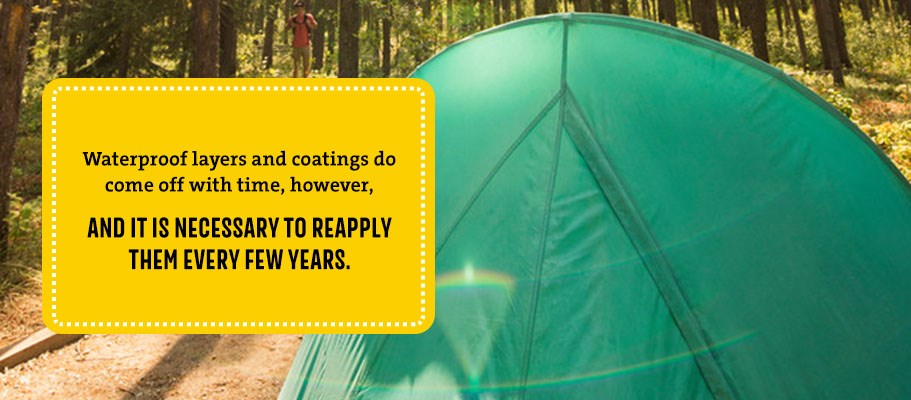
Have a look at the rest of the tent. If the waterproof coat is peeling off, you can reapply polyurethane by first cleaning the tent to remove the old layer, then brushing it on and letting it soak in. However, if the tent floor has lost its waterproofing, it may be best to purchase a new tent altogether.
5. How to Store a Tent
It comes as a surprise to most people that the best way to store sleeping bags is to stuff them haphazardly into their sacks. Though carefully rolling it up can lead to uneven fluff distribution, stuffing it in allows the fluff to get randomly distributed.
A tent, however, does not benefit from getting unevenly stuffed into its sack. After drying it completely out, fold the tent evenly into thirds along its longer axis. Then roll the tent tightly, working out air pockets as you go. This rolling puts roughly equal stress on all of the tent’s seams and fabrics.
When you get home from a trip, remove the tent and determine if it needs to dry. Some good indicators are if it feels at all moist or smells musty. When you have given the moisture time to evaporate in a dry room, store the tent in a loose bag. As mentioned earlier, a pillowcase makes a fantastic loose storage bag, since it is spacious and breathable.
Camping Tent Repair
Tents serve as our shield against the elements, and in doing so, they experience some rough treatment. Rain, wind, dirt, twigs, stones and human error are but some of the hardships a tent must endure. Occasionally, these hardships get the better of them, and repair is necessary to get them back in working order.
One item you should always have on hand is some sort of repair tape. The best tent repair tape is a matter of debate, but duct tape is an excellent all-around option. Nylon tent repair tape is also available.
Here are some of the most useful DIY tent repair tips.
1. How to Patch a Tent Floor
It is always good to have a small patch kit handy for tent floor repairs. When there is even a small hole in your tent floor, water can enter and get your sleeping bag and living area wet. Always take the preparatory measure of using a footprint underneath your tent.
If you have punctured a hole in your tent floor, a patch may be the best option for repairing it. Patches can come with a built-in adhesive, or you may have to apply some glue to fix it to the tent floor. In either case, make sure the tent floor is clean — if there is dust or dirt on its surface, it won’t hold the patch. Then attach the patch and give it several minutes to set.
If there is a tear or longer rip in your tent floor, grab some waterproof tape like duct tape and a sealant. Silicone-based sealant is great for most applications. On the outside surface of your tent, line up the edges of the tear as evenly as possible and lay tape over them. Then, on the inside, apply the silicone sealant and let it cure for 10 to 12 hours.
2. How to Repair a Ripped Tent Seam
Seams are one of the most engineered parts of tents due to their stress load and inherent risk of leaks. Have a tube of seam sealant on hand to waterproof seams from time to time — keeping water from entering them is one of the best ways to ensure they stay strong.
If your tent seam comes apart, you have several options: the proper fix, the quick fix or the professional fix.
- Proper fix: If you are handy with a needle and thread, you can emulate the way the tent manufacturers put the seam together and sew it back in place. Make sure to use a tough thread that can withstand outside weather. Also, be sure to stabilize the parts of sewing that came loose in the tear. When you are done sewing, give the seam a couple of coats of seam sealant to protect it.
- Quick fix: If you’re about to head out the door for your camping trip, or discover the tear when you’re already camping, it’s time to bring out the duct tape. Duct tape is fantastic for all sorts of quick fixes when camping, and it patches seams easily. Bring the edges of the seam as close together as possible, then lay the duct tape over the outside of the tent. If you have a hairdryer handy, you can gently heat it to increase its hold on the fabric.
- Professional fix: For a high-quality job, you may consider having a professional repair the tear. There are plenty of companies that offer reasonable rates for repairing torn tents.
3. How to Repair a Rip in the Wall of Your Tent
Rips in the wall of your tent are yet another DIY project any camper with the right tools can complete. You will need the following items:
- A bottle of rubbing alcohol
- A clean cloth
- Pair of scissors
- Duct tape
- A patch kit for mesh screens
Clean the outside of the tear by soaking part of the rag with rubbing alcohol. Make sure all dirt and dust are off the surface to ensure proper adhesion. Then, cut the appropriate size of repair tape to cover the hole. Round off the corners of the repair tape — this will keep it from peeling upwards from water.
Place your tent on a flat surface so the tear is flat and ready to receive the patch. Align the edge of the tear, and after removing the protectant back cover from the patch, press it on. Try to gauge if the tear is in an area that will bear a lot of tension, such as near a pole or corner. If so, mirror the patch on the inside of the tent as well. Give the patches a day to settle before packing the tent.
If the tear is in the mesh area of the tent wall, you can perform the same process with a mesh repair patch.
4. How to Repair a Broken Tent Pole in a Pinch
When tent poles break on a camping trip, they need a quick repair. Strong winds or a misplaced step can crumble, split or break these poles, and knowing how to put together a working solution is important.
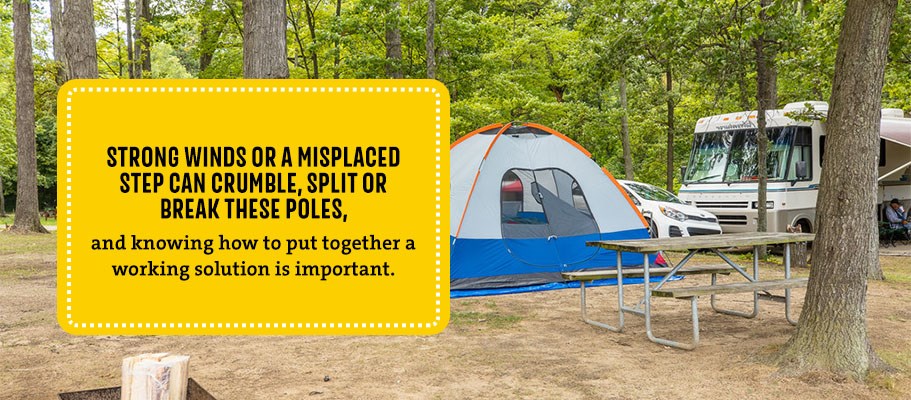
The first solution is to use the pole sleeve that likely came with your tent kit. Just like with duct tape and extra stakes, having one of these on hand is an excellent idea. If the pole is bent, slide the pole sleeve over it and lightly press it with a rock to bend it back into shape. If the pole is bent in half, unbend it and try to round out the kink with a set of pliers.
Once you have the pole sleeve centered over the break, duct-tape both ends of it to the pole so that it serves as a split. If the connecting piece of one pole has broken, slide the pole sleeve over both poles together and duct tape it.
In the event you don’t have a pole sleeve handy, take a stake and duct-tape it over the break to act as a splint. Be sure to wrap the entire length of the stake for sturdiness.
Take Care of Your Tent to Get the Most Usage out of It
Taking care of your tent and knowing how to maintain and repair it will go a long way in protecting it for years of usage. Keep in mind that the following actions will help you keep your tent in great condition:
- Choosing a suitable camping site
- Taking care of the tent as you set it up
- Never storing it when wet
- Cleaning it regularly
- Reapplying waterproof coatings
Other than that, tent repairs are usually easy to do with just a small kit of tools. Make sure to have duct tape, a patch kit, some extra stakes and a multitool with scissors and pliers. There are very few issues you won’t be able to resolve with these basic tools.
A tent can accompany us on a number of adventures and provide a snug, cozy shelter in which to enjoy them. Treat your tent well, and it will reward you with many years of good sleep, clean air and fun times.
